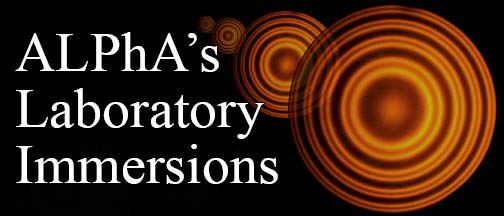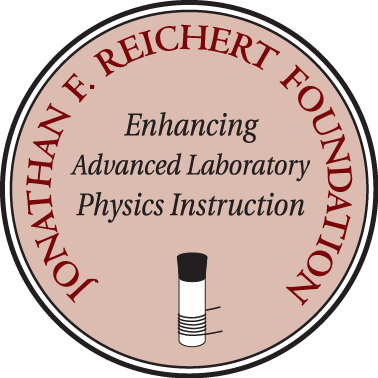- Home
- What We Do
- Laboratory Immersions
- Immersions 2024
- Imm2024Amherst_SoftMatter_LiquidCrystal
Univ. of Massachusetts - Amherst, Amherst MA
Soft Matter: Liquid Crystals and Liquid Crystal Displays
May 28, 2024 to May 29, 2024
Number of setups
available: 1
Maximum
number of participants: 3
------------------------------------------------------------------------------------------------------------------------------------------
Note: The UMass Soft Matter Summer Course follows this Immersion -- Participants will be able to also sign up for the undergraduate soft matter course that is happening May 29-31. This class is attended by undergraduates and faculty interested in learning more about soft matter and includes a tour of the soft matter research labs. Participants are encouraged to attend if they can.
Basic physics. Liquid crystals (LCs) are materials somewhat between crystalline solid and isotropic fluid (Fig. 1). In the so-called nematic phase, the molecules are free to flow, while remaining aligned with their neighbors along an axis called the director. In another word, the LCs have orientational order but no positional order. A thermotropic, nematic LC material will condense into crystalline solid at a low temperature, or melt into isotropic liquid at a high temperature above the clearing point. The fluidity and anisotropy of LCs make it a convenient material for optical modulation, the most well-known example of which is the liquid crystal display. When a small electric field is applied on the material, the molecules reorient along the director, changing the effective birefringence of the material and altering the polarization state of the light. Such changes can be reflected on the intensity change after light passing through a linear polarizer.
Fig 1. Nematic liquid crystal as an intermediate phase between crystalline solid and isotropic liquid.
The apparatus – We will be conducting two experiments. Both experiments measure the optical responses of the LC but use different methods at different complexity and budget levels. The first experiment uses an electric field to drive the reorientation of the LC molecules to tune the intensity of transmitted light, mimicking the working principle of LCD. The second experiment uses a more accurate method (Senarmont method) to measure the order parameter of the nematic LC. We use a commercially available LC compound and cells, and standard optical parts available from major vendors, such as Thorlabs or Edmund Optics.
- The liquid crystal material is filled in a cell made of two glass substrates coated with Indium Tin Oxide (ITO) layers. ITO are transparent and conductive material, allowing optical measurement while applying an electric field. Two metal wires are connected to the ITO electrodes to apply voltage signals. The cell gap is set by the glass spacers mixed in the glue that combine the two substrates together. The LC cell sits in a “hot stage” that controls the temperature of the sample. A low-power laser is used to shine a monochromatic light through the sample to probe the optical response.
|
Fig 2: Schematic of the setup for the 2 experiments. |
- In Experiment 1 (Fig. 2), a simple optical method based on two crossed linear polarizers will be used. The 2 rotatable linear polarizers will be placed on the laser path, one before (polarizer) and one after (analyzer) the LC cell (LC cell is rectangle in diagram under the words “Director 45°”. The cell, which sits in the hotstage (optional), has a fixed and uniform alignment of the LC molecules along the director. Through optical tuning, we will align polarizers in a crossed position, i.e., the transmission axes are perpendicular to each other. The alignment direction of the LC molecules, or the director, is at 45-degrees between the polarizers. Light intensity after the analyzer is measured by a photo amplifier and multimeter. An AC voltage is applied through the two metal wires using a basic function generator. Some background of polarizing optics using Jones matrix will be introduced first to understand the LC response.
- In Experiment 2, Senarmont method will be used to accurately measure the birefringence of the LC material and understand how the order parameter changes as a function of temperature. This upgrade is optional if a more in-depth optical education is desired. A high-precision quarter-wave plate will be introduced between the analyzer and the LC cell, and the analyzer can be upgraded to one controlled by a motorized stage, so that it’s quicker to find the minimum of the light intensity as it rotates. A longer calculation using Jones matrix will help students understand why the analyzer angle of minimal intensity gives a direct indication of the phase retardation of the LC sample. As the temperature increases, the total retardation continuously decreases, until it suddenly drops to zero at the clearing point. Since birefringence is a direct measurement of the orientational order parameter, student will compare the results with the well-known mean-field theory, the Maier-Saupe theory, and understand where the deviation can come from.
Importance of this experiment for current physics, metrology, or technology. Soft matter physics has been undergoing rapid growth in recent years. Subjects of studies include a variety of systems that are closely related to daily life, examples including polymers, colloids, surfactants, liquid crystals, and living systems. Their sensitive response to external stimuli makes them powerful and versatile candidates for applications, LCD being one of the best examples, where LC plays a central role in the hundred-billion-dollar industry. LC materials and LC theories are also finding new applications in the emerging active matter research, which is considered the one of the most fast-advancing frontiers of soft matter research. Adding this experiment to the currently small pool of soft matter projects in undergraduate laboratory will not only train students with interdisciplinary skills (condensed matter physics, optics, electronics), but also give them exposure to a useful and hot topic in the soft matter field, and thus effectively advance their career in either industry or academia.
Skills that will be acquired performing the experiments. Participants will learn optics, condensed matter theory, and advance their experimental skills with optical components and electronic instruments.
Outline of the two-day Immersion: equipment used, data acquired, analysis performed, calculation, etc.
Day 1 (Morning) – go over basic introduction to LC materials, optics, and Jones matrix method for polarization optics calculations. Practice some simple problems.
Day 1 (Afternoon) – setup experiment 1 on LCD. Learn optics alignment procedures and practice by finding the alignment of polarizers and LC cells. Take I-V curve (intensity as a function of applied voltage) as experimental data. Analyze the data to interpret the total effect birefringence as a function of voltage.
Day 2 (Morning) – Use Jones matrix to calculate the Senarmont setup. Learn condensed matter theories on order parameter and phase transition theories. Setup experiment 2.
Day 2 (Afternoon) – Measure the order parameter of the nematic LC using Senarmont method. Analyze the data and compare it with Maier-Saupe theory.
Equipment brought to the program by the participants: Participants don’t have to, but can benefit from bringing in their own laptop to review teaching materials, analyze data, and setup software used in the experiments.
Safety considerations – general and laser safety conditions need to be followed.
Cost estimate for the equipment required to implement the experiment.
Considering most programs have function generator, photo detector, and multimeter, the estimates of the cost here only include optical components.
|
Item |
# |
Price |
Source |
Upgrade/addition |
Price |
|
Laser |
1 |
$1,071 |
$5,096 |
||
|
Linear polarizer |
2 |
$91 |
$433 |
||
|
Quarter plate |
1 |
|
|
$507 |
|
|
Heater controller |
1 |
$1,060 |
|
|
|
|
Manual Rotation Stage |
2 |
$84 |
|
|
|
|
Motorized Rot Stage& Controller |
1 |
|
|
$1,662 |
|
|
Others (estimate) |
|
$500 |
|
|
|
|
Low Total Cost |
$2,981 |
High Total Cost |
$9,859 |
Travel information
Flight
Closest airport is Bradley (BDL) in Connecticut, but another choice is Boston (BOS). Usually people book ride-share shuttles to get from the airports to UMass. More information is at: https://www.cics.umass.edu/grads/arriving-amherst
Hotel
For accommodations, we have a special rate at the UMass campus hotel. Use this link to reserve a room ($179 a night).
https://www.reseze.net/servlet/SendPage?hotelid=1760&skipfirstpage=true&page=821421
This is right on campus and is within walking distance to the Immersion site. You also get free parking in the parking garage that is connected to the hotel so it makes everything very easy. Another choice is to use one of the area hotels, but then you will need transportation to UMass (bus or car).
Parking
If you will have a car, then parking in the garage is $1.75 per hour, lot parking is $8 per day.
https://www.umass.edu/transportation/summer-permits-2024
Public Transit
If you will be using the UMass bus system, then the UMass buses are free.
https://www.umass.edu/transportation/pvta-route-schedules
Host and Mentor:
Please note that the Jonathan F. Reichert Foundation has established a grant program
to help purchase apparatus used in Laboratory Immersions. Limitations
and exclusions apply, but generally speaking the Foundation may support
up to 50% of the cost of the required equipment.




